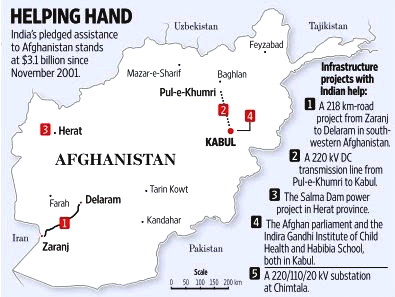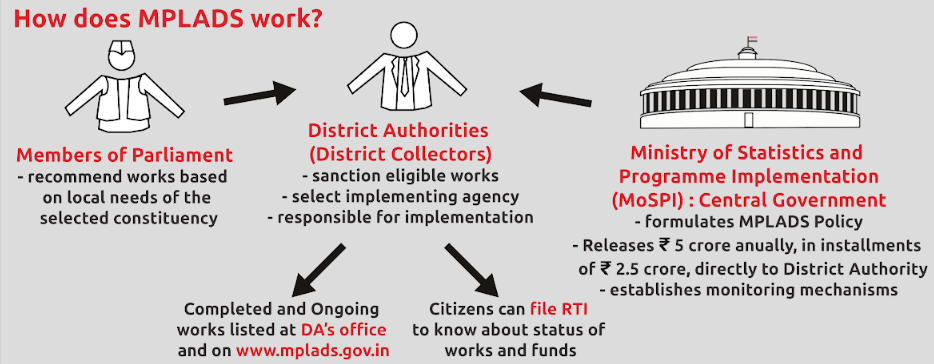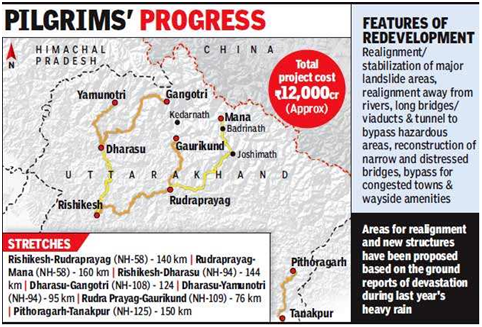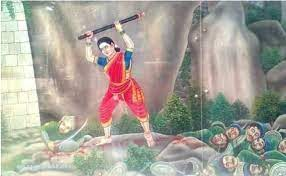International Relations
Delhi Declaration on Afghanistan
Why in News
Recently, the Delhi Regional Security Dialogue on Afghanistan was held. The meeting was composed of National Security Advisors’ (NSA) of regional countries and chaired by the Indian NSA.
- The meeting called for “urgent humanitarian assistance” to the Afghan people and urged close cooperation and consultation among the regional countries over the Afghan scenario.
- This is the third meeting of the Regional Security Dialogue (the earlier two meetings were held in in Iran, in 2018 and 2019).
Key Points
- Invited Participants: Afghanistan’s neighbours such as Pakistan, Iran, Tajikistan, and Uzbekistan, Turkmenistan, and other key players including Russia, and China.
- Need: After the withdrawal of US forces and the Taliban’s takeover of Afghanistan, India is concerned about security in the region.
- There is a possibility of terrorism spreading from the territory of Afghanistan.
- Highlights of the Delhi Declaration:
- Secure and Stable Afghanistan: Reiterated strong support for a peaceful, secure and stable Afghanistan while emphasising the respect for sovereignty, unity and territorial integrity and non-interference in its internal affairs.
- Condemning Terrorism: Committed to combat terrorism in all its forms and manifestations.
- Urged the regional members to ensure that Afghanistan would never become a safe haven for global terrorism.
- Ensuring Fundamental Rights: That is, the fundamental rights of women, children and minority communities are not violated.
- The assistance should be provided in non-discriminatory manner across all sections of the Afghan society.
- Collective Cooperation: Called for a collective cooperation against the menace of radicalization, extremism, separatism and drug trafficking in the region.
- Central Role of UN: Recalling the relevant UN Resolutions on Afghanistan, they noted that the United Nations’ (UN) continued presence in the country must be preserved.
- The recent UN Resolution 2593 reiterates the importance of combating terrorism in Afghanistan, including those individuals and entities designated pursuant to resolution 1267.
- Response by the Regional Countries:
- Russia held that multiple dialogue mechanisms “should not complicate” the unfolding situation in the Taliban controlled Afghanistan.
- Pakistan and China too were invited to participate in the consultation but both stayed away.
- Moreover, there was no representation from the erstwhile Afghan government or the Taliban.
- Uzbekistan and Turkmenistan’s NSAs did not mention the word terrorism at all in their opening statements.
- Other Afghan Peace Process Framework:
- Troika Plus Meeting on Afghanistan: The U.S.-Russia-China-Pakistan grouping on Afghanistan peace process.
- Moscow Format on Afghanistan: It was set up by Russia for Peace and stability in Afghanistan in the year 2017.
- It is a six-party mechanism. It involved Russia, India, Afghanistan, Iran, China and Pakistan.
Way Forward
- Inclusive Government: The solution comes only through the formation of an inclusive government with the participation of all ethnic groups.
- Russian Support: Russia has cultivated links with the Taliban in recent years. India would need Russia’s support in any form of direct engagement with the Taliban.
- Bonhomie With China: India should talk with China, with the objective of finding a political settlement and lasting stability in Afghanistan.
- Engaging with Taliban: Talking to the Taliban would allow India to seek security guarantees from the insurgents in return for continued development assistance or other pledges as well as explore the possibility of the Taliban’s autonomy from Pakistan.


International Relations
India Sweden Innovation Meet
Why in News
On 26 October, 2021, India and Sweden celebrated the 8th Innovation Day.
- Theme: Accelerating India Sweden Green Transition
Key Points
- Green Transition:
- India is well on its way to meet and exceed its Paris Climate commitments.
- Sweden’s goal is of achieving net-zero emissions by 2045 and negative net emissions following that.
- India and Sweden are together in the UN (United Nations) led industrial transition programme (‘Leadership Group for Industry Transition’).
- Both have the impacts of innovation with the launch of Hybrit Green Steel (with low carbon footprint), in a sector that accounts for approximately 30% of global greenhouse gas emission.
- Science & Technology & Research and Innovation:
- The India Sweden innovation collaborations are guided by the India Sweden Innovation Partnership and the Joint Action Plan (JAP).
- In 2018, the JAP was signed to include smart cities, innovation, and next generation transport.
- In addition, the Department of Biotechnology is already engaged with Swedish Partners on Incubator Connect, Digital Health Care and Global Bio India programmes, enhancing the partnerships in the field of Biotechnology.
- Call on Circular Economy:
- Both countries had a new joint call on Circular economy including the theme such as Health Science and Waste to Wealth.
- Circular Economy entails markets that give incentives to reusing products, rather than scrapping them and then extracting new resources.
- Agreed to launch the new call in 2021-2022 on broad themes viz., Public health, prevention, and health promotion Organization and provision of care for the elderly.
- Both countries had a new joint call on Circular economy including the theme such as Health Science and Waste to Wealth.
India - Sweden Relations
- Political Relations:
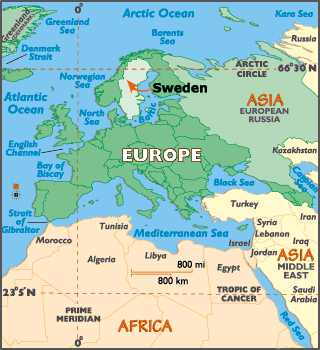
- Diplomatic relations were established in 1948 and steadily strengthened over the decades.
- The first India-Nordic Summit (India, Sweden, Norway, Finland, Iceland and Denmark) took place in the year 2018 in Sweden.
- Sweden also participated in the First India Nordic Baltic (including Estonia, Latvia and Lithuania) Conclave co-chaired by India in November 2020.
- Multilateral Engagement:
- India and Sweden jointly launched the Leadership Group on Industry Transition (LeadIT) in association with World Economic Forum (WEF) at the UN Climate Action Summit in 2019.
- In the 1980s India and Sweden worked together on nuclear disarmament issues within the framework of the ‘Six Nation Peace Summit’ (that also included Argentina, Greece, Mexico and Tanzania).
- At the UN General Assembly, India and Sweden present an annual Joint Statement on Humanitarian Affairs.
- In 2013, during the Swedish Presidency, India joined the Arctic Council as an Observer at the Kiruna Ministerial Meeting.
- Economic and Commercial relations:
- India is Sweden’s third-largest trade partner after China and Japan in Asia.
- Trade in goods and services has increased from USD 3 billion (2016) to USD 4.5 billion (2019).
- Defence and Aerospace (Sweden-India Joint Action Plan 2018): It highlights collaboration on space research, technology, innovation, and applications.
Way Forward
- Being a member of the European Union, Sweden can play an important role in India’s partnership with the EU and EU countries.
- Strategic engagements, bilateral trade and investment scenarios are expected to embolden shared economic progress under mutually beneficial nomenclature.
- The ongoing momentum of consolidation of strategic interests between New Delhi and Stockholm in the aftermath of March 2021 summit is expected to make an impeccable imprint in regional and global levels especially in defining the post Covid-19 geopolitical chessboard, especially in the context of India ascending to G-20 presidency in 2023.
Governance
MPLAD Scheme
Why in News
The Union Cabinet has approved the restoration of the Member of Parliament Local Area Development Scheme (MPLADS) for the remaining part of Financial Year 2021-22 till 2025-26.
- It will be co-terminus with the period of the 15th Finance Commission.
- The scheme was suspended for two financial years (2020-21 and 2021-22).
Key Points
- About:
- It is a Central Sector Scheme which was announced in December 1993.
- Objective:
- To enable MPs to recommend works of developmental nature with emphasis on the creation of durable community assets in the areas of drinking water, primary education, public health, sanitation and roads, etc. primarily in their Constituencies.
- Since June 2016, the MPLAD funds can also be used for implementation of the schemes such as Swachh Bharat Abhiyan, Accessible India Campaign (Sugamya Bharat Abhiyan), conservation of water through rain water harvesting and Sansad Aadarsh Gram Yojana, etc.
- To enable MPs to recommend works of developmental nature with emphasis on the creation of durable community assets in the areas of drinking water, primary education, public health, sanitation and roads, etc. primarily in their Constituencies.
- Implementation:
- The process under MPLADS starts with the Members of Parliament recommending works to the Nodal District Authority.
- The Nodal District concerned is responsible for implementing the eligible works recommended by the Members of Parliament and maintaining the details of individual works executed and amount spent under the Scheme.
- Functioning:
- Each year, MPs receive Rs. 5 crore in two instalments of Rs. 2.5 crore each. Funds under MPLADS are non-lapsable.
- Lok Sabha MPs have to recommend the district authorities projects in their Lok Sabha constituencies, while Rajya Sabha MPs have to spend it in the state that has elected them to the House.
- Nominated Members of both the Rajya Sabha and Lok Sabha can recommend works anywhere in the country.
- Significance of Restoration of the Scheme:
- It will restart fulfilling the aspirations and developmental requirements of the local community and creation of durable assets, which is the primary objective of the MPLADS.
- It will also help in reviving the local economy.
- Issues with MPLADS:
- Implementation Lapses: The Comptroller and Auditor-General of India (CAG) has flagged instances of financial mismanagement and artificial inflation of amounts spent.
- No Statutory Backing: The scheme is not governed by any statutory law and is subject to the whims and fancies of the government of the day.
- Monitoring and Regulation: The scheme was launched for promoting participatory development but there is no indicator available to measure level of participation.
- Breach of Federalism: MPLADS encroaches upon the domain of local self governing institutions and thereby violates Part IX and IX-A of the Constitution.
- Conflict with Doctrine of Separation of Powers: MPs are getting involved in executive functions.


Social Justice
Nutrition Smart Village Initiative
Why in News
A programme on “Nutrition Smart Village” will be initiated to strengthen the Poshan Abhiyan.
- It will be part of the Azadi Ka Amrit Mahotsav, to commemorate the 75th year of Independence of India.
Key Points
- About:
- The initiative is in line with the Prime Minister's call to adopt and transform 75 villages.
- A total of 75 villages will be adopted by All India Coordinated Research Project (AICRP) centres and Indian Council of Agricultural Research -Central Institute for Women in Agriculture (ICAR-CIWA).
- Objective:
- To promote nutritional awareness, education and behavioural change in rural areas involving farm women and school children.
- Harnessing traditional knowledge through the local recipe to overcome malnutrition.
- Implementing nutrition-sensitive agriculture through homestead agriculture and Nutri-garden.
- Poshan Abhiyan:
- About:
- Also called National Nutrition Mission, was launched on the occasion of the International Women’s Day on 8th March, 2018.
- The Abhiyan targets to reduce Stunting, undernutrition, Anemia (among young children, women and adolescent girls) and reduce low birth weight by 2%, 2%, 3% and 2% per annum respectively.
- It also targets to bring down stunting among children in the age group 0-6 years from 38.4% to 25% by 2022.
- Poshan 2.0:
- Recently, the Ministry for Women and Child Development inaugurated Poshan 2.0 and urged all Aspirational Districts to establish a Poshan Vatika (nutrition garden) during the Nutrition Month (Poshan Mah) (from 1st September, 2021).
- About:
- Scenario of Malnutrition in India:
- Despite decades of investment to tackle this malaise, India’s child malnutrition rates are still one of the most alarming in the world.
- The Global Hunger Index (2021) — which is calculated on the basis of total undernourishment of the population, child stunting, wasting and child mortality — places India at the 101st spot among 116 countries.
- The bane of child and maternal malnutrition is responsible for 15% of India’s total disease burden.
- According to the data from the fifth round of National Family Health Survey (NFHS) (2019-2021) from the 22 states surveyed so far, only 9 showed a decline in the number of stunted children, 10 in wasted children and six in underweight children.
- Research suggests that USD 1 spent on nutritional interventions in India could generate USD (34.1 to 38.6) in public economic returns three times more than the global average.
- Studies reveal that India loses up to 4% of its Gross Domestic Product (GDP) and up to 8% of its productivity due to child malnutrition.
- Despite decades of investment to tackle this malaise, India’s child malnutrition rates are still one of the most alarming in the world.
- Other Related Government Initiatives:
Governance
Janjatiya Gaurav Divas: 15th November
Why in News
The Union Cabinet has approved 15th November as Janjatiya Gaurav Divas to commemorate the brave tribal freedom fighters as part of the year-long celebrations of 75 years of India’s Independence.
Key Points
- About:
- The Janjatiya Gaurav Divas will be celebrated every year to recognize the efforts of the tribals in the preservation of cultural heritage and promotion of Indian values of national pride, valour, and hospitality.
- A tribal freedom fighter museum at Ranchi would be inaugurated by the Prime Minister.
- 15th November also marks the birth anniversary of Birsa Munda who is revered as God by tribal communities across India.
- The Janjatiya Gaurav Divas will be celebrated every year to recognize the efforts of the tribals in the preservation of cultural heritage and promotion of Indian values of national pride, valour, and hospitality.
- Tribal Freedom Fighters:
- Birsa Munda:
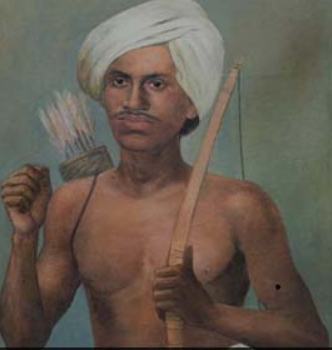
- He was born on 15th November 1875. He belonged to the Munda tribe.
- He spearheaded an Indian tribal religious Millenarian movement during British rule in the late 19th century across the tribal belt of modern-day Jharkhand and Bihar.
- Shaheed Veer Narayan Singh:
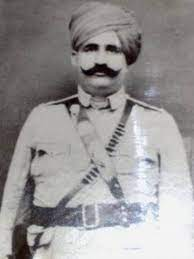
- He is considered the Pride of Sonakhan in Chhattisgarh, he looted trader’s grain stock and distributed them amongst the poor after the 1856 famine.
- The sacrifice of Veer Narayan Singh made him a tribal leader and he became the first martyr from Chhattisgarh in the independence struggle of 1857.
- Shri Alluri Seetha Ram Raju:
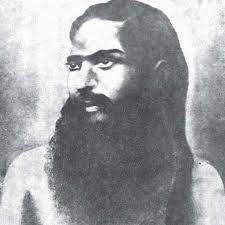
- He was born on 4th July, 1897 in a village called Mogallu near Bhimavaram in Andhra Pradesh.
- Alluri is best remembered for leading the Rampa Rebellion against the British in which he organised the tribal people of Visakhapatnam and East Godavari districts to revolt against the foreigners.
- He was inspired by the revolutionaries of Bengal to fight against the British government.
- Rani Gaidinliu:

- She was a Naga spiritual and political leader who led a revolt against British rule in India. At the age of 13, she joined the Heraka religious movement of her cousin Haipou Jadonang.
- For her, the Naga people’s journey to freedom was part of India’s wider movement for freedom. She also spread the message of Gandhi ji in Manipur region.
- Sidhu and Kanhu Murmu:

- On 30th June 1855, two years before the Great Revolt of 1857, two Santhal brothers Sidhu and Kanhu Murmu organised 10,000 Santhals and proclaimed a rebellion against the British.
- The tribals took an oath to drive away from the British from their homeland. The Murmu brothers’ sisters Phulo and Jhano also played an active part in the rebellion.
- Birsa Munda:


Governance
CharDham Project
Why in News
Recently, the Supreme Court (SC) has spoken of the need to balance national security concerns with environmental issues in the context of the Army’s request to expand the CharDham Project (CDP) roads leading to the Indo-China border.
- The request came in the context of construction being carried out by China across the border. However, expansion of roads has been opposed by an NGO citing environmental concerns.
Key Points
- About Chardham Project:
- Objective: CharDham Pariyojana aims to “improve the connectivity to the Chardham pilgrimage centres (Badrinath, Kedarnath, Gangotri, Yamunotri) in the Himalayas, making journeys to these centres safer, faster and more convenient.
- It will widen almost 900 km of highways connecting the pilgrimage sites and the Tanakpur-Pithoragarh stretch of National Highway (NH) 125, a part of the Kailash Mansarovar Yatra route.
- Role in National Security: This project can act as the strategic feeder roads which connect the India-China border with the Army camps in Dehradun and Meerut where missile bases and heavy machinery are located.
- Implementing Agencies: Uttarakhand State Public Works Department (PWD), Border Roads Organisation (BRO) and the National Highway & Infrastructure Development Corporation Limited (NHIDCL).
- NHIDCL is a fully owned company of the Ministry of Road Transport & Highways.
- Objective: CharDham Pariyojana aims to “improve the connectivity to the Chardham pilgrimage centres (Badrinath, Kedarnath, Gangotri, Yamunotri) in the Himalayas, making journeys to these centres safer, faster and more convenient.
- Environmental Concerns About the Project:
- The project may destroy about 690 hectares of forests with 55,000 trees and evacuate an estimated 20 million cubic metres of soil.
- Ruthless harvesting or uprooting of vegetation in the widening of roads can prove to be perilous for the biodiversity and regional ecology.
- Birds like Kalij Pheasant (Lophura leucomelanos, Schedule-I), Tragopans (Tragopan melanocephalus & Tragopan satyra, Schedule-I), and various species of Vultures (Schedule-I) along with endangered fish Golden Mahseer (Tor putitora) are among the wonderful species found there.
- While there is no link between the CharDham project and the recent glacier broken tragedy of Chamoli, indiscriminate blasting during road construction makes cracks in soil and rocks that may enhance the possibility of flash-flood in the future.
Governance
Minerals Concession (Fourth Amendment) Rules, 2021
Why in News
Recently, the Ministry of Mines has notified the Minerals (other than Atomic and Hydro Carbons Energy Mineral) Concession (Fourth Amendment) Rules, 2021.
- It will amend the Minerals (other than Atomic and Hydro Carbons Energy Mineral) Concession Rules, 2016 [MCR, 2016].
Key Points
- Amendments:
- Sale from Captive Leases:
- New rules inserted to provide a manner of sale of 50% of minerals produced from the captive leases.
- With this amendment, the way for releasing of additional minerals in the market by greater utilization of mining capacities of captive mines has been paved.
- Captive mines are those that produce coal or mineral for exclusive use by the company that owns the mines, while non-captive ones are those that produce as well as sell the fuel.
- Disposal of Overburden (OB):
- Provision added to allow disposal of overburden/ waste rock/ mineral below the threshold value, which is generated during the course of mining or beneficiation of the mineral.
- This will enable ease of doing business for the miners.
- Area for Grant of Mining Lease:
- Minimum area for grant of mining lease has been revised from 5 ha. to 4 ha. For certain specific deposits, minimum 2 ha. is provided.
- Part Surrender for all Cases:
- Part surrender of mining lease area allowed in all cases.
- Earlier, part surrender was allowed only in case of non-grant of forest clearance.
- Transfer of Composite Licence:
- Rules amended to allow transfer of composite licence or mining lease of all types of mine.
- Sale from Captive Leases:
- Objective:
- To increase employment and investment in the mining sector, increasing revenue to the States, increasing the production and time bound operationalisation of mines, increasing the pace of exploration and auction of mineral resources, etc.
Mining Sector in India
- About:
- India holds a fair advantage in production and conversion costs in steel and alumina. Its strategic location enables export opportunities to develop as well as fast-developing Asian markets.
- India is the world's second-largest coal producer as of 2021.
- India is the world's second-largest crude steel producer, as of 2020.
- India has the same mineral potential as South Africa and Australia. It produces 95 types of minerals but despite this huge mineral potential, the mining sector of India still remains underexplored.
- The mining sector contributes around 7 to 7.5% of the GDP of countries like South Africa and Australia whereas it is only 1.75% in India.
- 11 states account for 90% of the total number of operational mines (Andhra Pradesh, Odisha, Chhattisgarh, Jharkhand, West Bengal, Maharashtra, Tamil Nadu, Gujarat, Madhya Pradesh, Rajasthan, and Karnataka).
- Constitutional Provision Related to Mining:
- The entry at serial No. 23 of List II (State List) to the Constitution of India mandates the state government to own the minerals located within their boundaries.
- The entry at serial No. 54 of List I (Central List) mandates the central government to own the minerals within the Exclusive Economic Zone of India (EEZ).
- The central government has the ownership over all offshore minerals (ie, minerals extracted from the sea or ocean floor in the Indian maritime zones such as the territorial waters, continental shelf and exclusive economic zones).
- Related Schemes:
- The National Mineral Policy 2019.
- Initiatives are being taken to ensure early operationalisation of auctioned greenfield mineral blocks.
- Rationalisation of taxes in the mining sector is also being considered.
- Under the Atmanirbhar Bharat scheme, enhancing private investments in the mineral sector and bringing in other reforms has been announced.
- District Mineral Foundation Funds.


Governance
Mineral Conservation and Development (Amendment) Rules, 2021
Why in News
Recently, the Ministry of Mines has notified the Mineral Conservation and Development (Amendment) Rules, 2021 to amend the Mineral Conservation and Development Rules (MCDR), 2017.
- The MCDR has been framed under section 18 of the Mines and Minerals (Development and Regulation) Act, 1957 [MMDR Act].
- They provide rules regarding conservation of minerals, systematic and scientific mining, development of the mineral in the country and for the protection of the environment.
Key Points
- Compulsory Drone Survey:
- Rules prescribed that all plans and sections related to mine shall be prepared by combination of Digital Global Positioning System (DGPS) or Total Station or by drone survey in relation to certain or all leases as may be specified by Indian Bureau of Mines (IBM, Nagpur).
- A total station is an optical instrument commonly used in construction, surveying and civil engineering. It is useful for measuring horizontal angles, vertical angles and distance.
- Rules prescribed that all plans and sections related to mine shall be prepared by combination of Digital Global Positioning System (DGPS) or Total Station or by drone survey in relation to certain or all leases as may be specified by Indian Bureau of Mines (IBM, Nagpur).
- Digital Image Submission:
- New Rule inserted to provide for submission of digital images of mining areas by lessees and Letter of Intent holders.
- Lessees having annual excavation plans of 1 million tonne or more or having leased area of 50 hectare or more are required to submit drone survey images of leased area and up to 100 meters outside the lease boundary every year.
- Other lessees submit high resolution satellite images.
- This step will not only improve mine planning practices, security and safety in the mines but also ensure better supervision of mining operations.
- Reduction of Compliance Burden:
- Provision of daily return omitted to reduce compliance burden. Power of taking action against incomplete or wrong or false information in monthly or annual returns given to IBM, in addition to State Government.
- Penalty Provisions:
- Penalty provisions in the rules have been rationalized. Amendment in the rules categorized the violations of the rules under the following major heads:
- Major Violations: Penalty of imprisonment, fine or both.
- Minor Violations: Penalty reduced. Penalty of only fine for such violations prescribed.
- Decriminalization of Rules: Violation of other rules has been decriminalized. These rules did not cast any significant obligation on the concession holder or any other person.
- Penalty provisions in the rules have been rationalized. Amendment in the rules categorized the violations of the rules under the following major heads:
- Financial Assurance:
- Provision of forfeiture of financial assurance or performance security of the lease holder added in case of non-submission of final mine closure plan within the period specified.
- Increased Employment Opportunity:
- Allowed engagement of a part-time mining engineer or a part-time geologist for small mines which will ease compliance burden for small miners.
- Diploma in mining and mine surveying granted by duly recognized institute along with a second class certificate of competency issued by the Director General of Mines Safety is added in qualification for full time Mining Engineer.
- Also, qualification for part time Mining Engineer added.
Social Justice
New Draft Guidelines for Accessibility Standards
Why in News
Recently, the Ministry of Information and Broadcasting has issued draft guidelines for new accessibility standards.
- Under these almost all television channels are required to ensure that they either carry captions or sign language to help the hearing impaired understand the programming.
- Earlier, the Indian Sign Language Research and Training Centre (ISLRTC) and the National Council of Educational Research and Training (NCERT) signed a memorandum of understanding (MoU) to make NCERT textbooks accessible to hearing-impaired students in sign language.
Key Points
- About Draft Guidelines:
- Objective: The draft is released in process to get the “Accessibility Standards for Television Programmes for Hearing Impaired”.
- These standards will be notified under the Rights of Persons with Disabilities Act, 2016, to make television content more inclusive for persons with hearing disabilities.
- Scope: All programming or content like music shows, debates, scripted/ unscripted reality shows, etc.; and advertisements and teleshopping content will have to adhere to these standards.
- Exemptions:
- Live and deferred live content/events such as sports: live news, events like live music shows, award shows, live reality shows, etc.
- Channels which have less than 1% average audience share for all households over a year.
- Type of Service: The service providers or broadcasters will have the right to choose any one or more options from “Closed Captioning, Subtitles, Open Captioning and/or Sign Language (not only hand but facial expression also).
- Open captions always are in view and cannot be turned off, whereas closed captions can be turned on and off by the viewer.
- Responsibility: The creators of the content will be responsible to create the content for these services and deliver it to the concerned channels and broadcasters.
- Objective: The draft is released in process to get the “Accessibility Standards for Television Programmes for Hearing Impaired”.
- Earlier Instances to Support Hearing Impaired:
- Doordarshan has been carrying sign language interpretation of the address of President of India on the eve of Independence Day and Prime Minister’s address from the ramparts of Red Fort on Independence Day every year.
- Recently, the Ministry of Information & Broadcasting has asked Private Satellite News TV channels also to telecast a short programme on Independence Day Celebrations, along with corresponding sign language interpretation, in the afternoon/evening of 15th August.
Constitutional and Legal Framework for Disabled People
- Article 14: The State shall not deny to any person equality before the law or the equal protection of the laws within the territory of India.
- In this context, Persons with Disabilities should have similar and equal rights in the eyes of the Constitution.
- UN Convention the Right of Persons with Disabilities: India is a signatory to the United Nations Convention the Right of Persons with Disabilities, which came into force in 2007.
- The Convention recognizes accessibility as a human right and requires signatories to adopt appropriate measures to ensure access by persons with disabilities.
- Accessible India Campaign: The ‘Accessible India Campaign' also known as the Sugamya Bharat Abhiyan to enable Persons with disabilities to gain universal access, equal opportunity for development.
- The campaign seeks to enhance accessibility by making significant changes to the infrastructure, information and communication systems.
- Rights of Persons with Disabilities Act, 2016: The Government of lndia enacted The Rights of Persons with Disabilities Act, 2016, which is the principal and comprehensive legislation concerning persons with disabilities.
- The Act defines the responsibilities of the Central and State governments with regard to the services for persons with disabilities.
- The Act also recommends creating a barrier-free environment by removing all type of discrimination against persons with disabilities where they can share the development benefits which a normal person enjoys .


Important Facts For Prelims
Onake Obavva
Why in News
The Karnataka government has decided to celebrate ‘Onake Obavva Jayanti’ on 11th November throughout the state from this year (2021).
Key Points
- About:
- Onake Obavva was a woman warrior who fought the forces of Hyder Ali single-handedly with a pestle (‘onake’ in Kannada) in Chitradurga in the 18th century.
- Hyder Ali, a ruler of the Mysore Kingdom and father of Tipu Sultan invaded the Chitradurga Fort, which was ruled by Madakari Nayaka in the 18th century.
- Chitradurga Fort, locally known as Elusuttina Kote, (the fort of seven circles in Kannada), is situated in Chitradurga, 200 km northwest of Bengaluru.
- Onake Obavva was the wife of soldier Kahale Mudda Hanuma, who was the guard of the fort.
- Significance of Obavva:
- Obavva is considered to be the epitome of Kannada pride and celebrated along with other women warriors of Karnataka state like
- Abbakka Rani (first Tuluva Queen of Ullal in coastal Karnataka who fought the Portuguese).
- Keladi Chennamma (the queen of the Keladi Kingdom who is known for fighting against Mughal emperor Aurangzeb), and
- Kittur Chennamma (Queen of Kittur known for the 1824 revolt against the British East India Company).
- Inspired by Onake Obavva, in 2018, the Chitradurga police started ‘Obavva Pade’, a squad of women police constables to protect and educate women in the district.
- Obavva is considered to be the epitome of Kannada pride and celebrated along with other women warriors of Karnataka state like

